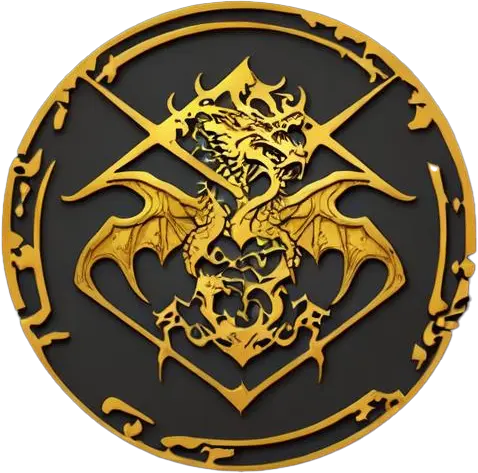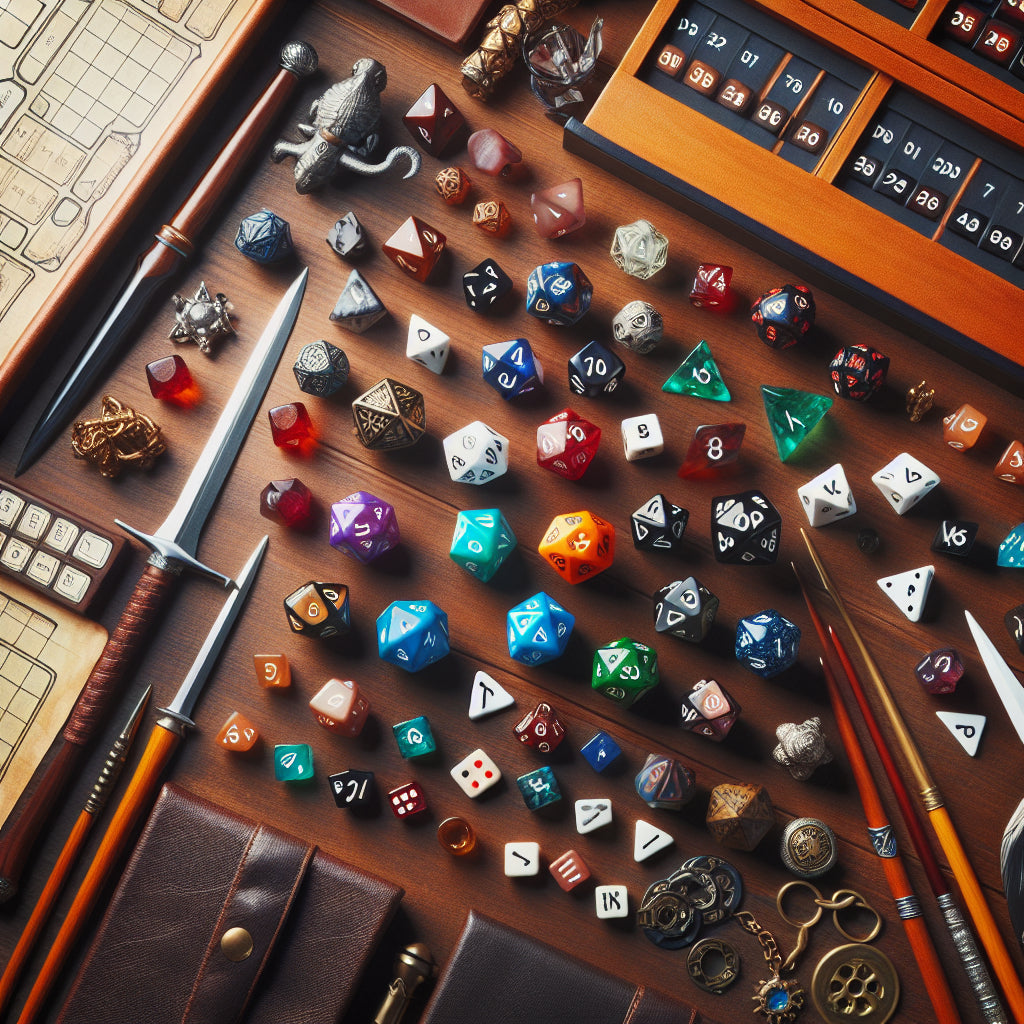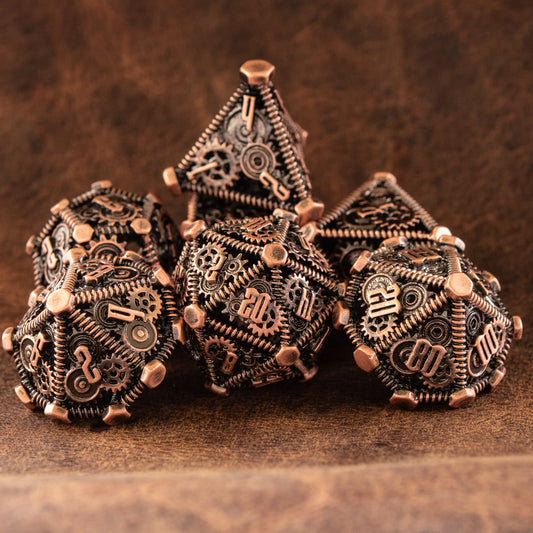D&D What Dice to Use: A Comprehensive Guide for New Players
Introduction
Dungeons & Dragons (D&D) is a game of imagination, strategy, and chance. At the heart of this beloved tabletop RPG are the dice, which play a crucial role in determining the outcomes of players' actions. Whether you're casting a spell, swinging a sword, or sneaking past a guard, the roll of a die can change your fate. For new players, understanding which dice to use and when can be daunting. This guide will walk you through the essential dice used in D&D, helping you navigate your adventures with confidence.
The Seven Types of D&D Dice
d10: The Versatile Die
Description
The 10-sided die, or d10, is a pentagonal trapezohedron, which means it has ten faces. Each face is numbered from 0 to 9, with the 0 typically representing a 10.
Uses
The d10 is incredibly versatile in D&D. It's often used for:
- Damage Rolls: Many spells and weapons, like the longsword when wielded with two hands, use the d10 for damage.
- Hit Points: Certain classes, such as the Fighter and Paladin, use the d10 to determine their hit points.
- Percentile Die: When paired with another d10, it can be used to roll percentile dice (d100), which are often used for determining random outcomes and loot tables.
d12: The Heavy Hitter
Description
The 12-sided die, or d12, is a dodecahedron, with each face being a pentagon. It’s larger and less commonly used compared to other dice but plays a significant role in specific scenarios.
Uses
The d12 is primarily used for:
- High-Damage Rolls: It’s the go-to die for heavy weapons like the greataxe, favored by Barbarians.
- Hit Points: The Barbarian class uses the d12 to determine their hit points, reflecting their robust and resilient nature.
d20: The Backbone of D&D
Description
The 20-sided die, or d20, is an icosahedron and is the most iconic die in D&D. It's easily recognizable and is central to the game’s mechanics.
Uses
The d20 is used for:
- Attack Rolls: Determining if an attack hits its target.
- Ability Checks: Assessing the success of skill attempts.
- Saving Throws: Determining if a character avoids or mitigates effects.
- Initiative: Deciding the order of turns in combat.
Understanding D&D Dice
Overview of Dice in D&D
In Dungeons & Dragons, seven types of dice are used, each serving different purposes:
- d4 (four-sided die): Used for small damage rolls and certain spells.
- d6 (six-sided die): Common for character stats and multiple damage rolls.
- d8 (eight-sided die): Balanced for average damage rolls and common weapons.
- d10 (ten-sided die): Versatile for damage and hit points.
- d12 (twelve-sided die): Used for high-damage rolls.
- d20 (twenty-sided die): Central to most game mechanics.
- Percentile Dice (d100): Used for random outcomes and loot tables.
Why Dice Matter in D&D
Dice are more than just tools for randomization; they are integral to the storytelling and excitement of D&D. Here’s why they matter:
- Determining Outcomes: Dice rolls decide the success or failure of actions, adding unpredictability to the game.
- Adding Tension: The uncertainty of dice rolls creates suspense and excitement.
- Guiding the Story: Dice help shape the narrative, influencing events and character development.
By understanding and mastering the use of these dice, you can enhance your D&D experience, making each game session more thrilling and immersive. Whether you're a new player or a seasoned adventurer, knowing "D&D what dice to use" is essential for navigating the world of Dungeons & Dragons effectively.
D&D What Dice to Use: A Comprehensive Guide for New Players
The Seven Types of D&D Dice (Continued)
Percentile Dice: The d100
Description
Percentile dice, often referred to as d100, consist of two 10-sided dice (d10). One die represents the tens digit (00, 10, 20, etc.), and the other die represents the units digit (0-9). Together, they generate a number between 00 and 99, with 00 typically representing 100.
Uses
Percentile dice are used for:
- Random Outcomes: Determining probabilities for events, such as the likelihood of finding a rare item.
- Loot Tables: Rolling on treasure tables to determine what items or gold a character may find.
d4: The Small but Mighty Die
Description
The 4-sided die, or d4, is a tetrahedron with four triangular faces. Each face is numbered from 1 to 4, and the result is usually read from the number at the base of the pyramid.
Uses
The d4 is used for:
- Low-Damage Rolls: Small weapons like daggers and clubs.
- Certain Spells: Spells like Magic Missile and Healing Word use the d4 for damage or healing.
d6: The Common Die
Description
The 6-sided die, or d6, is a cube with numbers from 1 to 6 on each face. It is the most familiar die to those who have played traditional board games.
Uses
The d6 is used for:
- Character Stats: Rolling ability scores during character creation.
- Common Weapons: Weapons like shortswords and javelins.
- Multiple Damage Rolls: Spells like Fireball and abilities like Sneak Attack.
d8: The Balanced Die
Description
The 8-sided die, or d8, is an octahedron with triangular faces. It is a balanced die often used for moderate damage rolls.
Uses
The d8 is used for:
- Average Damage Rolls: Weapons like longswords and battleaxes.
- Hit Points: Certain classes, such as the Bard and Cleric, use the d8 for determining hit points.
Caring for Your Dice
Cleaning and Maintenance
To keep your dice in top condition:
- Clean Regularly: Wipe them with a soft cloth to remove dirt and oils from handling.
- Avoid Harsh Chemicals: Use mild soap and water if necessary, but avoid harsh chemicals that can damage the dice.
- Inspect for Damage: Regularly check for chips or cracks, especially in metal or gemstone dice.
Storage Solutions
Proper storage is essential for maintaining your dice:
- Dice Bags: Use soft, padded bags to protect your dice from scratches and damage.
- Custom Containers: Consider custom wooden or plastic containers with compartments for each die type.
- Dice Trays: Use dice trays during gameplay to prevent dice from rolling off the table and getting lost or damaged.
Choosing the Right Dice
Factors to Consider
When selecting your dice, consider the following:
- Material: Plastic, metal, wood, and gemstone each have unique feels and weights.
- Weight: Heavier dice, like metal ones, feel more substantial but can damage surfaces.
- Design Preferences: Choose designs and colors that resonate with your character or personal style.
Popular Dice Materials
Compare different materials to find what suits you best:
- Plastic: Affordable and available in a wide range of colors and designs.
- Metal: Durable and heavy, offering a satisfying roll and sound.
- Wood: Unique and eco-friendly, often handcrafted.
- Gemstone: Luxurious and beautiful but more fragile and expensive.
Conclusion
Understanding "D&D what dice to use" is crucial for any new player. The seven types of dice, each with their specific uses, are integral to the game's mechanics and storytelling. Proper care and storage of your dice will ensure they last for many adventures. When choosing dice, consider material, weight, and design to enhance your gaming experience.
Embark on your D&D journey with confidence, armed with the knowledge of your trusty dice. Explore further resources, join a campaign, and let the roll of the dice guide your epic adventures in the world of Dungeons & Dragons. Happy rolling!
By following this comprehensive guide, new players can navigate the complexities of D&D dice with ease and confidence, ensuring an immersive and enjoyable gaming experience.






